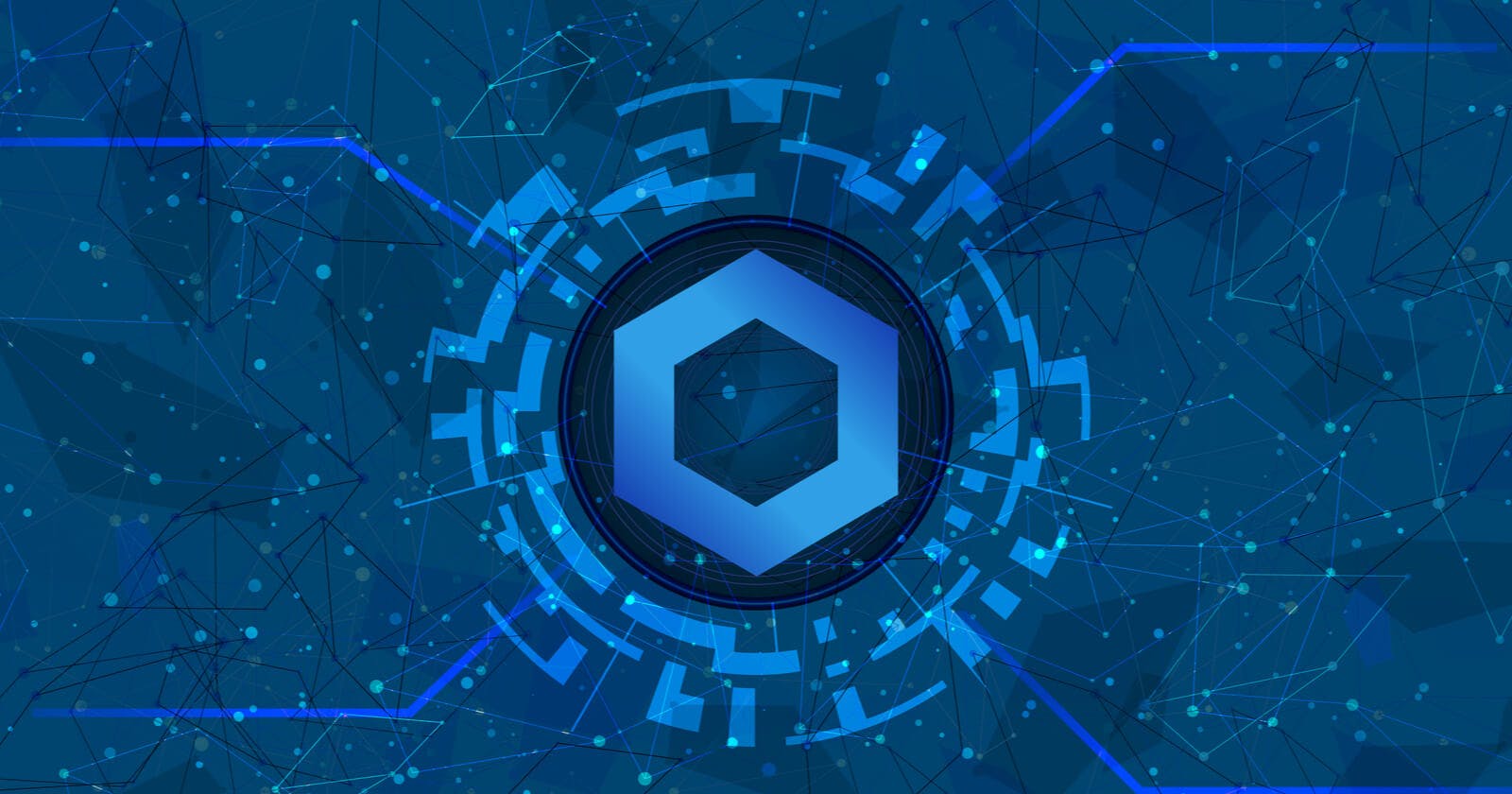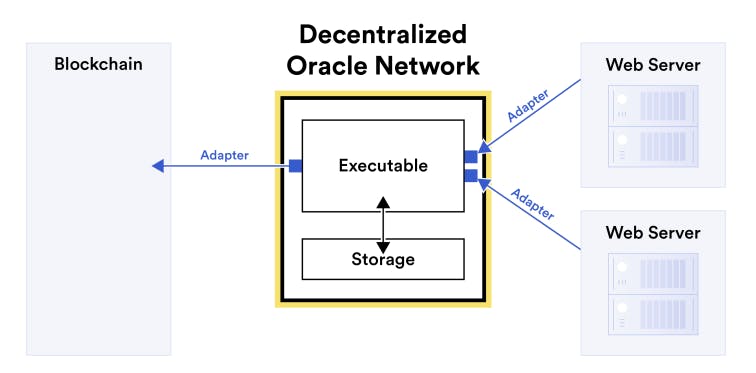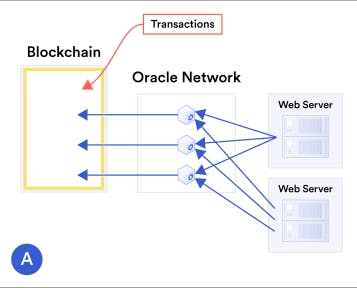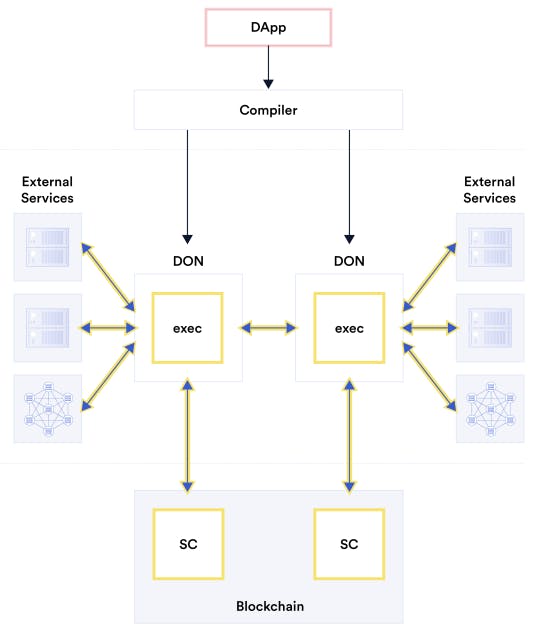Unlocking Chainlink's Off-Chain Potential: Revolutionizing Decentralization. PART 1
4 min read

Table of contents
🌐Chainklink has been one of its kind to provide a new dimension of decentralization, an idea of efficiency and security. All these terms bundle up to be used with something called 'Oracles'.
Let's see what an Oracle is:

Smart contracts are created with complex algorithms and computations that are eventually done on the blockchain and passed as a block after verification from all nodes. The whole process is decentralized and happens in a trustless way. All of the processing happens on-chain. Now what if the Smart Contract needs some data that is nowhere in the smart contract and will have to be fetched from the outside world i.e. off-chain?
The developer will simply take it from some source and feed it into the smart contract. But that is where the problem lies!
Smart contracts are built with the idea of complete decentralization and fetching data from a single source i.e. a centralized source or organization leaves the complete idea partially centralized! Then computations happen in a decentralized way, but, on the data that is fetched from a centralized source.
This is where Oracles become relevant... Oracles are just like any other conventional blockchain, with the same consensus protocol. But they operate on the perimeters of any kind of computation. Oracles have nodes grouped to form a committee. That committee generates data called reports that is data from various data sources that are processed through each node before sending it on-chain.
The whole computation is executed by 2 parts of the Oracle: 1) The Executors and 2) The Adapters.
🚀The Executors are the processing frames of the Oracles where all of the computation is done abstractly.
🚀The Adapters are the streams of data that pass through the Executors and take the computed data further to the blockchain. They are functionally bidirectional i.e. they can carry data inside the chain and outside the chain also.
You can refer to the diagram below to see how executors use storage for their processing, and how adapters carry data bi-directionally.

Key Points for Chainlink 2.0 Decentralization
Chainlink is taking abstraction to a completely different threshold of implementation! The yellow highlighted area in the above diagram indicates where the most important part of the Chainlink structure lies.

In a similar diagram above, the yellow highlighted area is shown where the blockchain is. This is the current way of executing transactions happening on Chainlink or any other blockchain that is the source of high gas fees, problems like front-running and back-running, and stealing of funds from other users.
📊Chainlink proposes introducing a MetaLayer for all of its computations on the DON. All the transactions that were previously happening on the blockchain will now occur within its executable, known as the Transaction Execution Framework (TEF). This will lead to the following:
🚀Computation will be confidential, ensuring user privacy. Confidentiality-preserving adapters will also carry information securely to the TEF. This will be a use-case very similar to Zero-Knowledge Proofs, where only the proof of the computation information is bridged on the Ethereum main chain.
🚀Use of roll-ups, which Chainlink will execute, to bundle up transactions and send them for validation in the blockchain. This will result in very low gas fees as computation happens on the TEF instead of the main chain.
🚀 Prevention of attacks on the blockchain chain due to network dissimilarities and block manipulation. Chainlink will have FSS(Fair Sequencing Services) that will sequence all transactions fairly without any opportunity for manipulation. Since sequencing and transactions would not happen based on network speed and gas fees, gas fees would be much lower for transactions.

The above diagram illustrates 2 things:
A) State of transactions on Ethereum due to block manipulation and front-running
B) State that Chainlink mentions about achieving with its TEF(Transaction Execution Framework)

The above diagram is an illustration of how smart contracts will take off-chain data into their algorithms making it efficient, accurate, and faster. This is how smart contracts can compute faster and be the source of data for all De-Fi-related transactions i.e. Swapping, Flash Loans, lending, borrowing, trading in stocks, flash loan arbitrage, etc.
📊Data Abstraction will play a major role as it will help external data providers interact very easily with the blockchain without the need to know how it works. The DON will integrate the smart contract and off-chain providers using its combination of services that will optimize and reduce computation costs like never before.
📩For more reads, subscribe to my newsletter and blogs.
